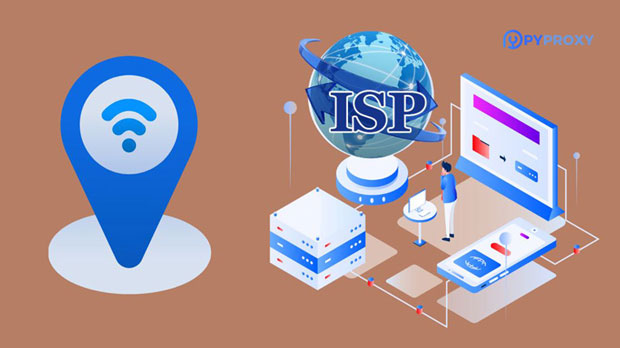When considering proxies for online activities, two popular options frequently come up: Netnut and PYPROXY. One of the most critical aspects to evaluate when selecting between them is latency and response speed. Latency is the delay before a transfer of data begins following an instruction for its transfer, while response speed refers to how quickly the proxy responds to requests. In the following article, we will deeply analyze the differences in latency and response speed between these two services, assessing how they impact performance and practical usability. Introduction to Latency and Response SpeedLatency and response speed are two crucial factors that directly impact the efficiency and user experience of proxy services. Both terms often overlap in everyday conversations but have distinct meanings. Latency is the delay experienced before the requested data transfer takes place, which can often be measured in milliseconds. On the other hand, response speed refers to how quickly a proxy can respond to incoming requests once the initial connection is established. A fast response is vital in tasks such as web scraping, online gaming, or even day-to-day browsing, where users need seamless and uninterrupted connectivity.Overview of Netnut and Pyproxy ProxiesBefore diving into a comparison, let’s first provide an overview of Netnut and Pyproxy to understand their underlying technology and services. Netnut is a well-established proxy provider known for its robust infrastructure, which uses residential IPs that are sourced from real users. This method ensures that traffic appears natural, making it difficult for websites to detect proxy usage. Pyproxy, on the other hand, focuses on delivering high-performance proxies via Python-based frameworks, targeting both residential and data center proxies.The differences between these services begin with their approach to latency and response times. While Netnut’s infrastructure aims to provide anonymity and natural traffic, it can sometimes lead to slightly higher latency due to its reliance on residential IPs, which can be subject to traffic congestion or route inefficiencies. Pyproxy, being more lightweight and optimized for high-speed connections, generally offers lower latency and faster response times, especially in use cases that require speed over anonymity.Understanding Latency: A Critical Factor for Online TasksLatency is an essential consideration when using proxies for tasks such as browsing, gaming, or data scraping. A proxy with higher latency introduces delays that can affect everything from website load times to real-time communication, making it a critical aspect for users who require low-latency connections.In the case of Netnut, the proxy’s latency tends to be higher due to its reliance on residential IPs. Residential IPs are typically slower compared to data center IPs since they are routed through personal home networks, which might not be as optimized for high-speed data transfer. Additionally, because these IPs are used by multiple users for different purposes, they can experience congestion, leading to inconsistent latency.Pyproxy, however, often performs better in terms of latency. Its use of data center proxies, which are optimized for high-speed performance, allows for faster data transfers and lower latency. These proxies are hosted in facilities with dedicated bandwidth and optimized routing paths, reducing the delay experienced by users. For businesses or individuals who require the fastest connections for web scraping or other time-sensitive tasks, Pyproxy tends to be a more reliable option.Impact of Latency on Web Scraping and AutomationWhen it comes to web scraping or automation, both latency and response speed are critical to achieving optimal performance. Higher latency can result in delays in retrieving data, which can lead to inefficient scraping and even the risk of getting blocked by websites. Let’s break down how both Netnut and Pyproxy handle web scraping scenarios.With Netnut, while the residential proxies offer high levels of anonymity, they come at the cost of increased latency. In cases where high anonymity is not a priority, the higher latency could negatively impact scraping efforts, especially when large amounts of data need to be extracted within short timeframes. The delay in data transfer can lead to missed deadlines or slow data processing, which can be a significant disadvantage in competitive industries.On the other hand, Pyproxy's low-latency performance is ideal for tasks that require rapid responses, such as scraping large websites or executing automated tasks that rely on real-time information. The low latency ensures that the requests and responses are processed much quicker, which helps in completing scraping tasks efficiently. Furthermore, Pyproxy’s use of data center proxies offers greater stability and faster processing, reducing the chances of encountering throttling or blocking.Response Speed: How Quickly Do Proxies React?Response speed is another key metric to evaluate when comparing proxy services. While latency focuses on the delay before data transfer begins, response speed measures the time it takes for the proxy to handle a request once it has been received.Netnut’s response time can be slower due to the indirect nature of residential IPs. These proxies are routed through multiple layers of networks, which might cause slight delays in processing the request. Furthermore, because these IPs are often shared by multiple users, the overall traffic load can affect how quickly the proxy responds to requests.In contrast, Pyproxy's response speed is typically faster. Since it relies on data center proxies, which have dedicated infrastructure and direct routing paths, the request-response cycle is much quicker. This feature is especially beneficial for high-demand applications such as gaming, financial trading, or any other real-time service where delays could be costly. Pyproxy’s lightweight infrastructure further ensures that it can handle large volumes of requests without significant slowdowns.Real-World Use Cases: Which Proxy is Better for Specific Tasks?Let’s now consider how latency and response speed differences between Netnut and Pyproxy affect real-world use cases.1. Web Scraping: If anonymity and avoiding detection are top priorities, Netnut’s residential proxies are a suitable choice, though users should be prepared for slightly higher latency. However, for those needing fast data extraction, Pyproxy offers a more optimized approach with lower latency and quicker response times.2. Online Gaming: In gaming, where split-second decisions and real-time interactions are crucial, low latency and quick response times are paramount. In this context, Pyproxy would be the preferred option due to its superior performance in these areas.3. Financial Trading: For activities such as forex or cryptocurrency trading, latency and response speed can directly affect profitability. Pyproxy, with its faster data processing, would likely provide traders with a competitive edge.4. Content Streaming: For streaming services, higher latency may result in buffering or reduced quality. Here, Pyproxy’s lower latency could significantly enhance the user experience, allowing for smoother and uninterrupted streaming.Conclusion: Which Proxy Service Should You Choose?In conclusion, both Netnut and Pyproxy have their strengths and weaknesses when it comes to latency and response speed. Netnut, with its residential proxies, offers superior anonymity but comes at the cost of higher latency and slower response times. Pyproxy, on the other hand, excels in providing faster, more efficient connections thanks to its data center-based proxies.Choosing between the two largely depends on the specific needs of the user. If anonymity and avoiding detection are more important than speed, Netnut might be the better choice. However, for tasks that demand low-latency and fast response times, such as web scraping, gaming, or financial trading, Pyproxy is likely to provide a better overall experience. Understanding these differences allows users to make a more informed decision based on their unique requirements.
Oct 22, 2025



































































